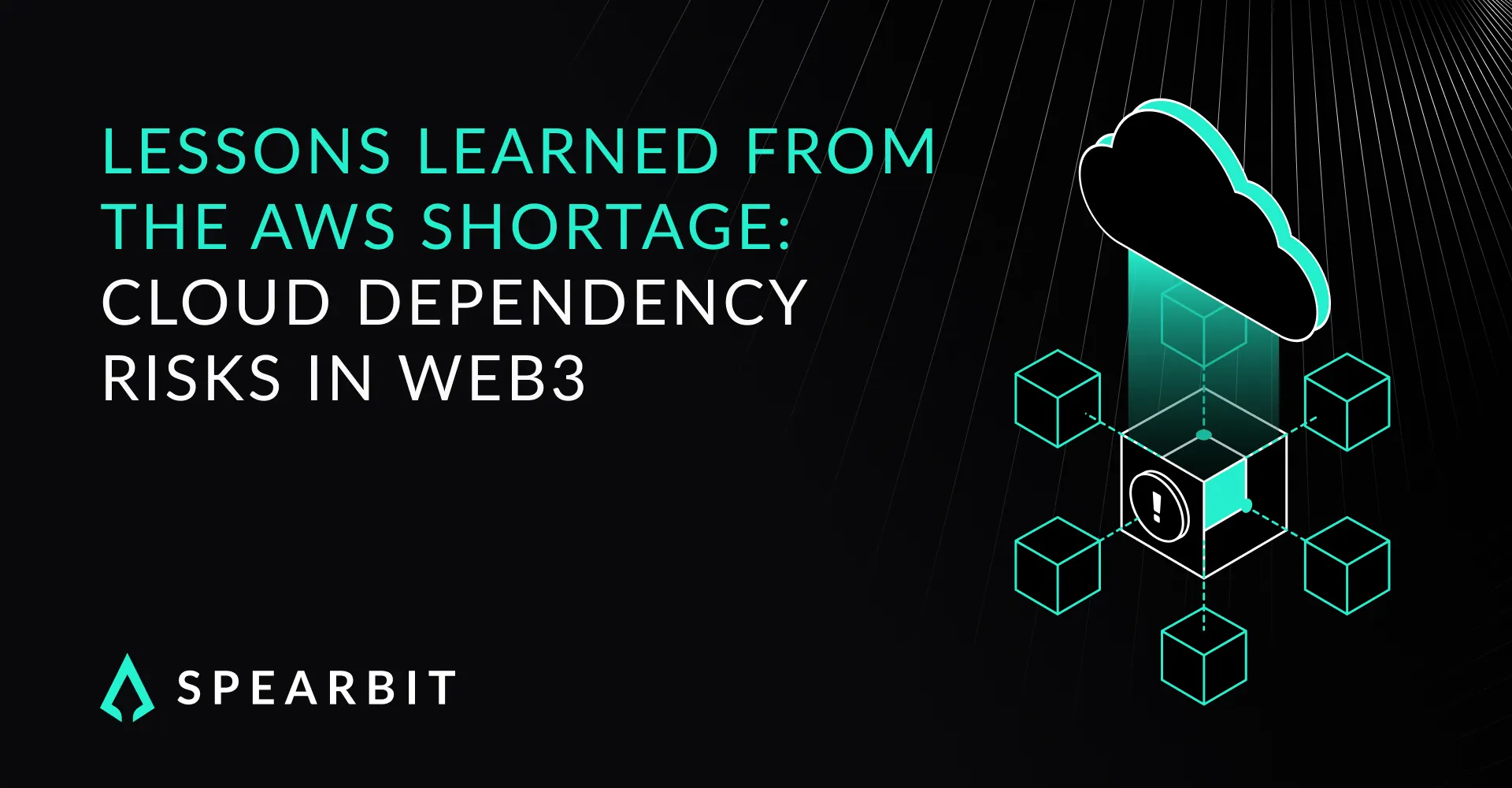In 2025, Amazon Web Services (AWS) reported a shortage of high-performance chips, a bottleneck driven by surging demand for AI compute. While this may seem like a cloud infrastructure problem, it directly affects a growing class of decentralized protocols. The Web3 stack often claims decentralization at the protocol level, but beneath that lies a deeply centralized operational surface.
This post outlines how infrastructure reliance introduces fragility across validator networks, sequencer architectures, and CI/CD pipelines, and what protocol organizations can do to mitigate those risks.
Cloud Centralization in a Decentralized Ecosystem
Cloud providers form the foundation for much of Web3’s infrastructure. From RPC nodes and validator clients to data availability services and governance tooling, centralized cloud resources underpin critical operations.
According to 2025 infrastructure audits, over 65 percent of Ethereum validators rely on AWS-hosted instances. For rollups, sequencers often run entirely within single region cloud deployments. Protocol frontends, deployment scripts, and incident response systems frequently use CI tools hosted within the same ecosystem.
When AWS reprioritizes its hardware allocations, as it has with GPU and networking resources, availability shifts. That creates constraints that propagate across the stack.
Examples of Emerging Fragility
Validator Homogeneity
A large portion of staked Ethereum runs on cloud virtual machines in a small number of data centers. This presents correlated failure risks whether through region-level outages, misconfigurations, or service interruptions.
Sequencer and Layer Two Risk
Many rollups operate sequencers using proprietary logic on single cloud infrastructure. During a recent testnet rollout, one Layer Two protocol experienced a twelve hour sequencer outage due to GPU resource reallocation in its AWS region. No on-chain failure occurred, but the execution layer paused for hours.
Build Pipeline Exposure
Deployments often rely on GitHub Actions, CircleCI, or custom CI pipelines hosted on AWS. A chip or capacity bottleneck upstream delays deployments and emergency patching, increasing the risk window during high severity incidents.
RPC and Oracle Latency
When RPC providers or oracle services host nodes in congested regions, access times increase. This slows frontends, affects arbitrage windows, and can influence price oracle accuracy.
Security Implications
Cloud centralization creates non-obvious but high impact risks:
- Availability Risk: Cloud disruptions degrade service quality for relayers, sequencers, and backend logic even if contracts remain deployed.
- Response Latency: Incident response tooling tied to cloud infrastructure can become inaccessible or delayed.
- Misplaced Trust Assumptions: Protocols often assume independence or failover in systems that are actually colocated.
- Correlated Downtime: A single cloud misconfiguration or regional outage can affect dozens of independent looking systems simultaneously.
Recommendations for Protocol Resilience
- Map Your Infrastructure dependencies
- Identify where validators, sequencers, or backend agents are hosted. Assess single points of failure tied to cloud providers.
- Diversify Deployment Environments
- Use multi-region, multi-provider setups where possible. Encourage validator operators to deploy in heterogeneous environments.
- Design Fallback Paths for Incident Response
- Maintain offline and cross-provider communication channels. Ensure key operations such as multisig control or timelock pausing are not gated by cloud user interface access.
- Monitor Supply Chain Shifts
- Track pricing, capacity, and policy changes from major cloud vendors. Watch for AI or machine learning workloads displacing your protocol’s compute resources.
- Harden Your Continuous Integration and Deployment Tooling
- Validate that critical pipelines have local or containerized alternatives. Consider infrastructure as code rollouts that can shift between providers.
Conclusion
Cloud shortages are not abstract infrastructure concerns. They are upstream threats to decentralized protocols. When validator networks, sequencers, and deploy tooling all rely on the same provider, decentralization becomes brittle. Organizations must treat infrastructure choice as a core security decision, not just a DevOps convenience.
Spearbit provides composability-aware and infrastructure-conscious security reviews. We help organizations assess their operational exposure and design protocols that remain resilient under external pressure. Reach out to learn how we can support your system’s readiness beyond smart contract logic.




